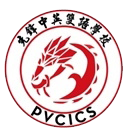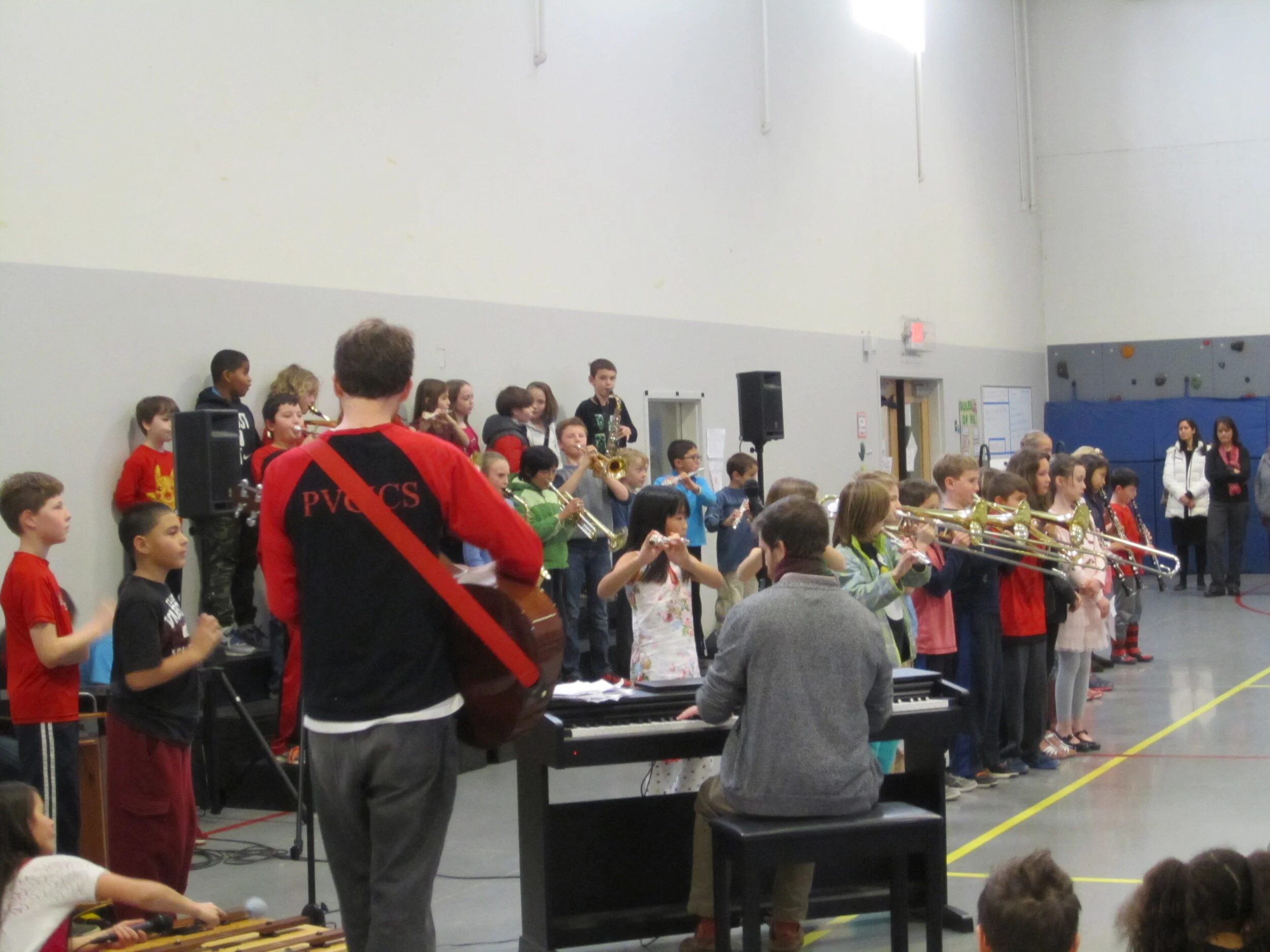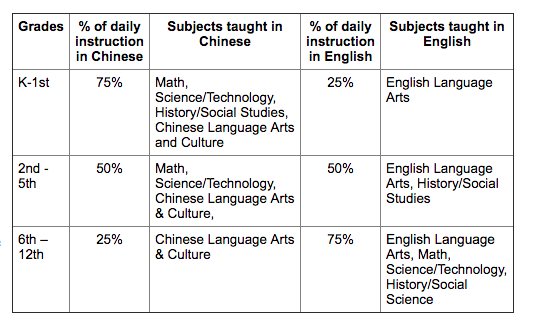Academics
Educational Philosophy
"We believe that all students should learn or maintain a second language, beginning in elementary school, and should be expected to master that language. This expands opportunities to communicate with others, to work in an increasingly competitive worldwide economy, and to understand the diversity of cultures." – The Massachusetts Common Core of Learning
The core of PVCICS’s educational philosophy is that through early and sustained immersion in the Chinese language with culture integrated throughout, students will achieve high academic attainment, be highly proficient in two languages and develop sensitivity and tolerance for other cultures.
PVCICS uses a one-way immersion model to teach Chinese in a classroom where the majority of students speak English as their native language. Language immersion programs use a proven educational methodology that has been around for decades. According to the Center for Applied Linguistics, over 320 immersion programs were documented in the United States at the end of 2005.
While it may appear counter-intuitive, that high performance in a rigorous academic curriculum can be achieved with instruction in a new language, it has become clear from research that students will nonetheless learn that curriculum as well, or better than, students learning the curriculum in their native language. Immersion practitioners believe that such achievement is due to the strategies used by immersion teachers. Some of these strategies are identified below.
Immersion teachers make language comprehensible to beginning students using a variety of techniques: they use visual cues to meaning such as concrete objects, manipulatives, concrete experiences, along with facial gestures and body language to make themselves understood. They build on background knowledge, using it along with context to convey meaning. They use language that is simplified in terms of syntax, speak more slowly, emphasize key vocabulary, and both extend and expand students’ limited utterances. As students progress in the language, teachers use linguistic strategies as well. They expand the ways in which they make themselves understood, using paraphrase, exemplification, and literacy as tools for building language.
PVCICS’s students participate in hands-on, inquiry based activities that encourage student-to-student interaction, discourse and reflective thinking. Small and cooperative group instruction in all subject areas creates age-appropriate topics and contexts in which students want and need to talk to one another in both languages. Students are taught skills in all subject areas and earn to work independently, applying their language and conceptual learning in problem solving and writing. PVCICS incorporates multiple approaches in its teaching to include all students, including English Language Learners, Special Education and at-risk students, in active, meaningful ways.
A visiting performer teaching our students about a Chinese musical instrument.
At PVCICS, Chinese language acquisition occurs naturally by using Chinese as the language of instruction during a portion of the day. As is the practice in immersion programs, no English is used by the teacher during the Chinese portion of the day, although students can talk to the teacher and one another in English until they gain sufficient proficiency in Chinese. During the English portion of the day, English reading, language arts, and abstract curriculum concepts - including academic vocabulary - are taught. The remainder of the K-1st curriculum, along with Chinese language and literacy development, is taught in Chinese.
Culture is an integral part of language learning. Studies show that attitudes about race most often take root between ages four and eight. Furthermore, the age of ten is a crucial time in the development of attitudes toward nations and groups perceived as `other', and thus it is important that children begin language and culture study before the age of ten, when they are more open to other ways of being. In early start language and culture programs children view second language learning and the insights gained into another culture as a normal part of their schooling.
"People who have learned two very different cultures have the advantage of bicultural vision; like binocular vision, bicultural vision allows people to see in depth; that is, they know that there are several ways to understand and utilize any situation." – Paul Bohannan, Discovering the Alien: A Workbook in Cultural Anthropology
An additional positive outcome is that brain researchers have found that learning Chinese enhances musical and artistic skills. This is thought to occur because Chinese is a tonal language with a logographic writing system. Researchers have found there is a higher incidence of perfect pitch and more right-brain stimulation in Chinese speakers.
Curriculum
As a Massachusetts public charter school, PVCICS's curriculum is aligned with the Common Core/Massachusetts Curriculum Frameworks (MCFs) standards. PVCICS’s curriculum addresses the learner outcomes for all Massachusetts students at a given grade level. Instructional strategies and resources are compatible with best practices in immersion education.
In K-5 grades, some core subjects are taught in English and some in Chinese. For subjects taught in Chinese, PVCICS adapts and develops instructional resources that are either aligned with the Common Core/Massachusetts Curriculum Frameworks (MCFs) or are easily aligned to produce grade appropriate and linguistically accessible Chinese teaching materials. Where possible, curricular resources are adapted to support PVCICS’s cultural mission. Adaptation of English language curriculum for use in immersion programs is a strategy that has been successfully implemented in Chinese immersion programs.
In 6-8th grades, students take five core subjects (English, Math, Science, Social Studies/History and Chinese) and take three specials classes (art, music and PE) for the entire school year. In 8th grade, students may take Algebra I if they've passed a placement test. Students have Chinese everyday for two hours. Other classes are taught in English. PVCICS offers two threads of Chinese starting in 6th grade: one for those who were at PVCICS for elementary immersion in K-5 and one for new students entering in 6th grade.
In 9-10th grades, the curriculum is designed to prepare students for the International Baccalaureate (IB) Diploma Programme in 11th and 12th grades. Students take five core subjects (English, Math, Science, Social Studies/History and Chinese) and three specials classes (art, music and PE/health) for the entire year. Students have Chinese daily for two hours. Other classes are taught in English. PVCICS offers a third thread of Chinese for new high school students.
In 11-12th grades, all students enroll in six International Baccalaureate classes each year to meet the requirements of the IB Diploma Programme. IB classes are two year classes spanning 11 and 12th grades. Please see details about the IB program by clicking here for more information.
An approximate breakdown of instructional time by grade is shown below. Specials classes (Art, Music and Physical Education) are taught in English or Chinese.



